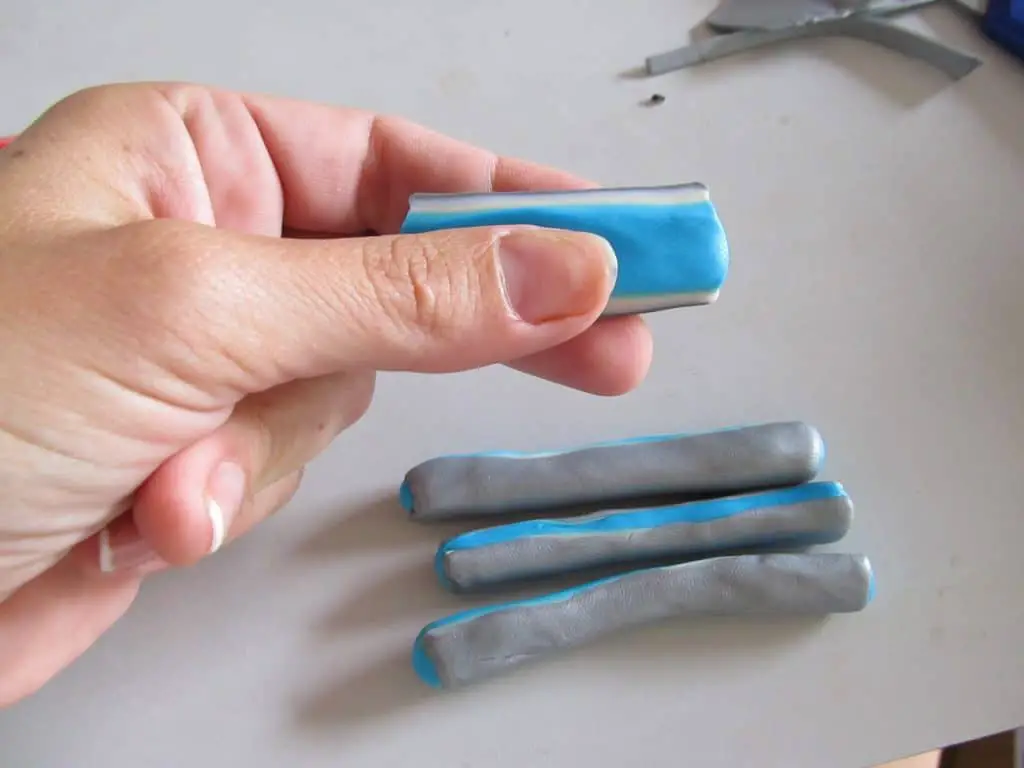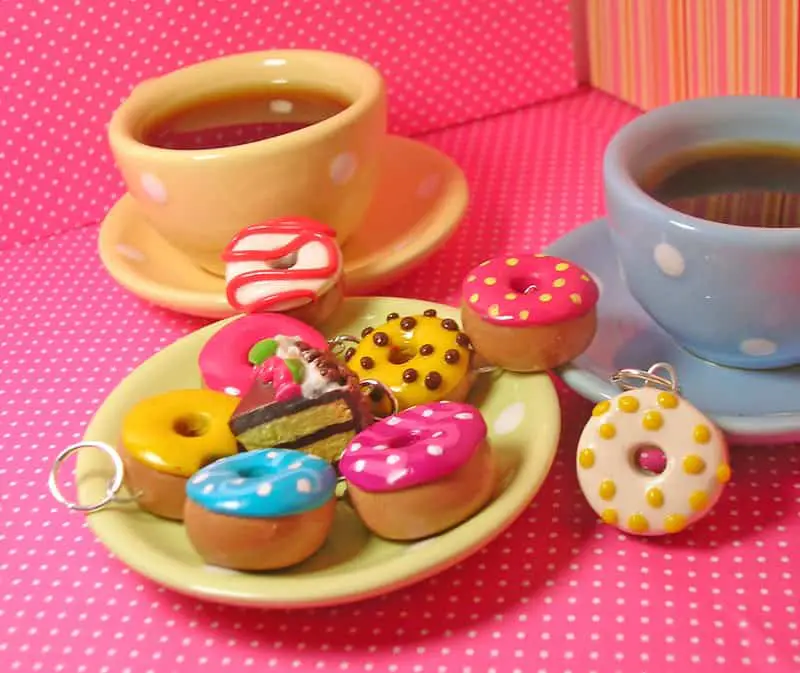If you are venturing off from simply painting on a canvas, you might have heard about polymer clay. Many people use paint, ink, and even stamps to create designs on their clay. Polymer clay cures at significantly lower temperatures than regular clay, so it can be easily hardened in a home oven or toaster oven.
So, can you use and bake acrylic paint on polymer clay? Definitely yes! Not only is it safe, but acrylic paint is the most recommended type of paint for polymer clay due to its thickness.
There are so many options for designs and techniques, but what about the type of paint we use on the polymer clay? We now know that acrylic paint is the preferred kind of paint, but I do want to share with you that artist’s grade is the best acrylic paint for clay.
I personally use this set because the colors are super vibrant and each tube has the transparency level on them, so you don’t have to guess or ruin your project.
Artists grade acrylic paints are preferred over students grade because students grade will not have the same pigment and chemicals to make the color last without chipping, or even having to do multiple layers on the clay. Artist’s acrylic paints always come in a tube and contain few to none of the cheap fillers that students acrylic paint might contain.
So if you can afford it, this type of acrylic paint will generally give you the best results for your polymer clay project.
The Baking Process

Now that you have painted you polymer clay project, it’s time to cure it. You can do this by baking it in a regular oven or even a smaller toaster oven at home. Although it varies slightly by brand, most polymer clay must be cured at 260°F to 280°F. If your clay is thick, you’ll need to cure it longer.
While polymer clay is non-toxic, I don’t recommend curing the clay as an eating utensil like forks or spoons, due to it being is porous, meaning it would be impossible to clean it sufficiently to prevent bacteria from growing in/on it.
The problem is that some ovens are prone to temperature spikes. If the temperature exceeds 300°F (149°C), the clay may scorch or burn. Whenever you cure polymer clay, and especially if you’re new to it, you should use an oven thermometer to monitor the temperature.
I have personally cured my polymer clay bowls and decor for about 30 minutes to start, and then I will re-cure it for another 15-20 minutes to make sure the acrylic paint adheres.
So after you re-bake your clay for 15 minutes at 275 degrees F, you will want to apply a third complete layer, adding finishing details, and re-bake for a final 15 minutes at 275 degrees F. Keep in mind that over-baking will cause darkening of the clay, and burning can cause bubbling and darkening.

Did You Know..?
Polymer clay is a versatile material. It is a popular material for bead-making artists because it’s so much easier to work with than glass since no pen flame is needed. Also, it’s more comfortable to wear and less likely to break than glass.
A lot of people even use polymer clay to cover non-clay objects and to make bowls and other decorations. Many miniaturists agree that polymer clay is perfect for making their own doll house furniture and decorations.

Artists also use polymer clay to make decorative objects, like clocks, wall hangings and masks, or any household décor you can think of. What I love about it is that you can create practically anything you can imagine from polymer clay, and even add glass, ink and many other types of extras to it.
Storing Polymer Clay
If polymer clay is properly stored, it will last for years. The key is to keep it out of sunlight and excessive heat.
Unopened clay isn’t an issue — but once you’ve opened it make sure to store it in Tupperware to avoid dust and debris. You can also wrap your clay in plastic if you can ensure a tight wrap with no leaks.
Do You Have to Seal Polymer Clay?
Although you don’t have to seal and finish your polymer clay, it does look nicer and gives it a glossy finish. Baked polymer clay is durable plastic and therefore more durable than any sealer. I recommend this set from Amazon for sealing or bonding your polymer clay.
If you’re baking jewelry, the person must also be protected from any pigments, dyes, and mica coming off on their clothes or skin. If the project is purely decorative and will merely be sitting on a shelf, sealing is not imperative. Some artists will glaze their cured jewelry to give it that glossy look, and I have even seen a matte finish as well which looks pretty cool.
I always recommend sealing anything you bake, not only for the look, but also to protect it against dust, peeling, and breakage. Think of sealing your clay project the same way you would add a clear coat to your nail polish or the clear coat on a car.

Glossy Sealers
Varathane is a brand name of polyurethane sealant available on Amazon. It’s a popular polymer clay available in gloss, semi-gloss, and satin. You can’t go wrong with Verathane.
Pearl Ex Varnish can be used as a medium OR varnish. It’s AP-certified, non-toxic, and safe for many uses.
Epoxy Resin is a strong, durable clear coat that can withstand wear and tear. It does take a little longer to cure it, but with the right oven thermometer you should be fine. This is definitely my top pick for my polymer clay projects.
Matte Sealers
Translucent Liquid Sculpey can provide the matte (non-glossy) finish you’re looking for at an affordable price. It’s important to note that you can’t cure it with heat or it will end up with a glossy finish.
Liquitex Matte Varnish has the low sheen, dry finish you’re looking for. It’s also quite durable and affordable.
Always remember to experiment and try out what works best for you and your style of painting/glazing.
Can Polymer Clay Harden Without Baking?
If you find that using an oven to cure your polymer clay just isn’t for you, well you’re in luck. You don’t need to bake your clay in order to cure it. Make sure you purchase an air dry clay, since each brand has different instructions.
Keep in mind that while you may not need to cure it in the oven, the results may not be to your liking. Some times the clay may dry uneven or not have that finish look as it would in the oven.
Once you have sculpted your clay, set your item in a warm room on a shelf that has an even temperature. Most air-dried clays take a minimum of 24 hours to harden. After the clay has dried, you can paint it with artist’s acrylic paints or even with acrylic craft paints.
I hope you guys enjoyed this article, and don’t forget to check out all my articles and Recommended Products for your acrylic painting needs.
Happy painting!


One thought on “Can You Bake Acrylic Paint on Polymer Clay?”
Comments are closed.